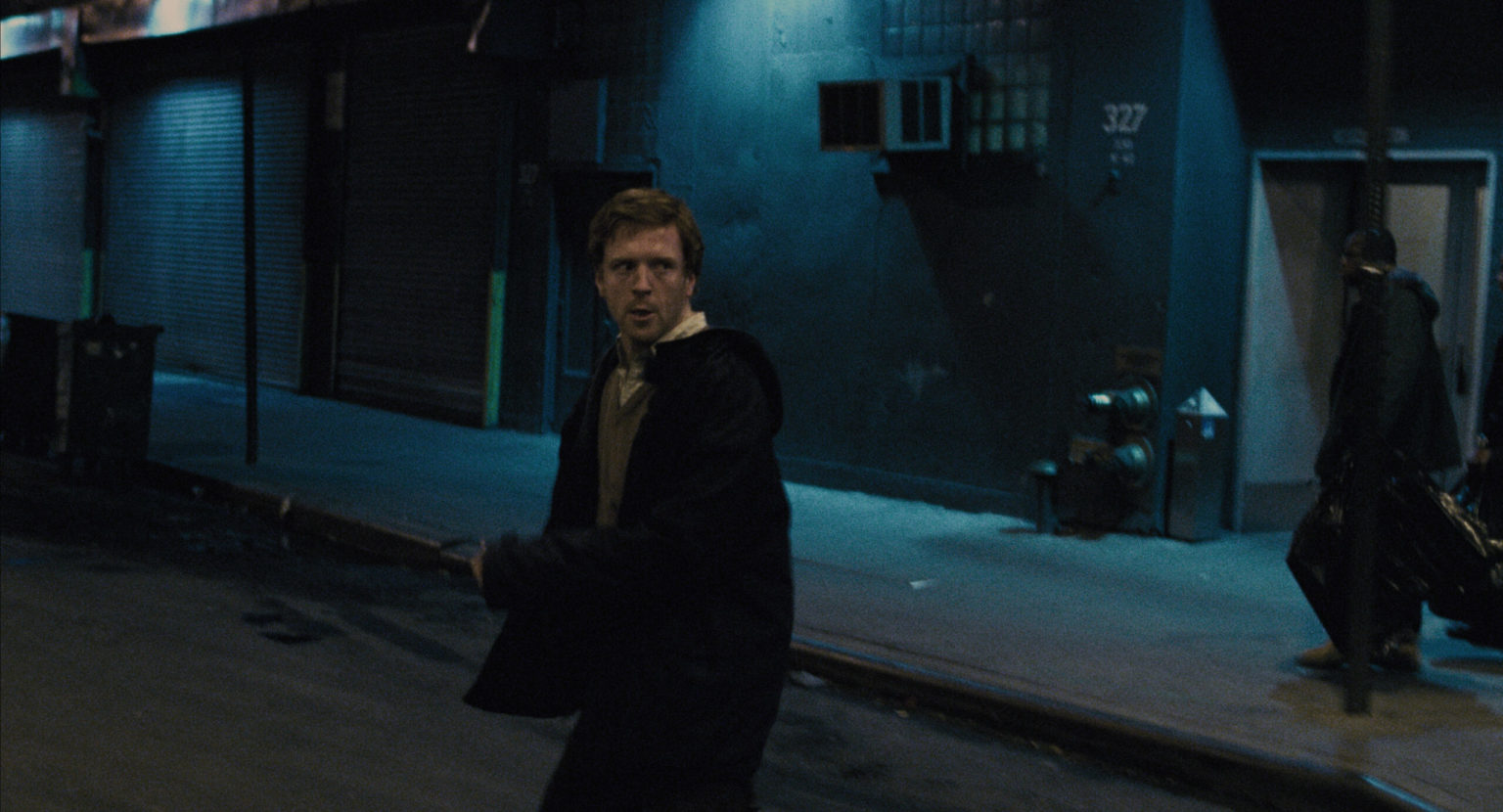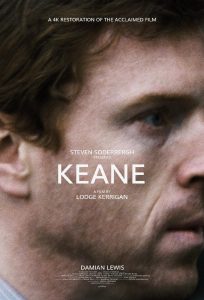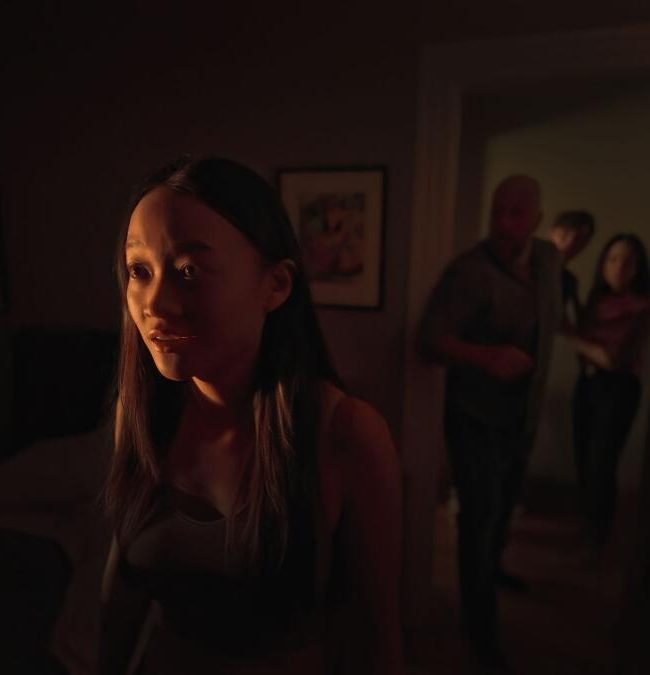A Conversation with Lodge Kerrigan (KEANE)

Lodge Kerrigan, is a multi-faceted artist in both television and film. He entered the industry with his critically acclaimed, 1993 debut, Clean Shaven. For the next 5 years, Kerrigan would serve as a cinematographer and assistant camera on a few American indie pictures. He would return as a writer director in 1998 with his film Claire Dolan, which debuted in the main competition in Cannes. Lodge would take a six year hiatus from the industry as he gained funding and developed the script for his masterpiece 2004 Keane. That film also debuted in Cannes, this time in the Directors Fortnight category. At the time, the film was critically acclaimed, however, it never reached the wide audience it deserved. Now, 18 years later, Lodge, along with executive producer Steven Soderberg have remastered and restored Keane. In those years you could find Lodge writing and directing episodes of television for numerous programs, debuting his 2012 film Rebecca H in Un Certain Regard at Cannes or producing indie features. Lodge feels like an enigma in the industry and it was an honor to speak with him in this interview which was edited for length and clarity.
Hammer to Nail: Why, after all these years, was this the right time to restore Keane?
Lodge Kerrigan: Because the rights were reverted to the distributor Grasshopper. Then, Steven Soderberg, who is the executive producer, said to me “Would you be interested in remastering it?”
HTN: When was this?
LK: We started last year and finished earlier this year.
HTN: Talk about this restoration process, it really looks amazing. How involved were you in the process? Can you give an example as to what you and the restorers do to make something like this look so fresh?
LK: It was shot on 35MM so we remastered and then restored it from the original camera negative. I was very involved, Kristina Boden, who I work with, she is a fantastic editor, we supervised it together. She edited Keane, Claire Dolan and my episodes of The Girlfriend Experience. Travis Curtis who is the post supervisor, and Larry Blake who supervised the sound, they also did the original sound design and mix. We were all involved on a daily basis. We would go in and watch the initial remastering and then there were some shots that needed to be restored. We really took advantage of new technology. There were old visual effects, not like CGI, just fixing some problems like lighting or shutter speed. The photography process has evolved. When we did Keane, it was completely photochemical. Now, there’s a process where you photograph on set even if you are shooting on film. There is a very advanced and sophisticated digital space where you can really go in and shape it. You can do it as long as you have the money (laugh). It’s a two part process now that did not really exist back then.
HTN: So, are you a film purist or are you a proponent of the digital revolution? What about 35MM was so attractive for this story?
LK: I believe in the right medium for the right film. I have no problem shooting degraded high 8 video, forget high def or anything like that. For Keane, we decided to shoot film because it provides a certain distance. Video is so immediate. I felt like if the camera was on the characters so close for so long and if there was not a slight distance, then it might have been too immediate.
HTN: Damian Lewis stars in the film and honestly, I could not imagine anyone else playing the role. Damian was not exactly the star he is now. How did you land on Damian? Did you always have him in mind when you wrote the script?
LK: I never write scripts for particular people because if you don’t get them, then what happens? So Heidi Levitt, who was the casting director, found him. I just tried to imagine him in the role. His character in Band of Brothers is absolutely nothing like Keane. They could not be further apart. It is just a question of imagination. Constantly, when I am writing something, I filter all my experiences. In the back of my mind. I am thinking of a script and I start to see another world through that lens. In the same way with Damien, when I saw Band of Brothers, I just tried to imagine him in the role of Keane. Then I flew out to London to meet him. I knew it would be a very intense process working together. We got along wonderfully. We are still very good friends to this day. We saw the character in a very similar light. I wrote the script on location, so I had the privilege, when we were rehearsing, to bring the actors to the locations during the rehearsal process. They could see the world and inhabit it. We improvised some scenes, however, it was important to me that they own their dialogue.

HTN: Rebecca H. debuted in Un Certain Regard and Keane played in Cannes. When you apply for Cannes, are you applying for the main slate and you get put in these categories, or do you apply for those specific sections of the festival.
LK: There’s the official selection, then there is directors fortnight which is separate and then there is critics week which is separate as well so if one wanted to be involved in any one of those sections, they would need to apply to one or all three. The main selection, as I understand it, has been evolving, there are many more sections than when Keane played or when Claire Dolan was in competition at Cannes. The official selection now is obviously the main competition. I believe they have a classics section now. They probably have a few others. Back in the day it was primarily competition or Un Certain Regard.
HTN: You and the cinematographer, John Foster worked together to create a tight, claustrophobic and brutalist aesthetic. What does the use of handheld camera contribute to this film and why does it fit this story better than the typical coverage you would see in a film.
LK: I think just the immediacy of being with him. The one thing I wanted to do was not answer for the audience whether Keane ever had a daughter. That is up to the audience to determine by themselves. When you direct, for Damien, for myself, we had to make our own choice. You cannot direct and act out an ambiguous state. You have to be specific. Shooting handheld in that physical proximity hopefully draws an audience into his world.
HTN: Explain the decision to only have diegetic sound in the film?
LK: I think one of the responsibilities of a director is to find the overall aesthetic for the film. By aesthetic I do not just mean production design or the look of the photography, I mean the overall vision, the overall experience. If we are trying for this immediacy, I felt like adding a soundtrack over it would have been too self conscious. It would have worked against what we were trying to achieve.
HTN: This film is very bleak, there is no other way to slice it, was the feeling on set similar? Do you try to keep things as serious as possible on a set like this or was there a surprising amount of levity?
LK: (Laughing) Yeah we all walked around totally bleak…no it was not bleak at all. It was a very intense process, because we were shooting in a lot of live environments. The only editing in the film, the jump cuts, was all in camera editing. It was one shot per scene, that is it. There was no coverage at all. We were very focused on the work, it was almost like shooting a documentary. I do not want to say it is like shooting a documentary or documentary style, however, the concentration and the focus was at a level like that. There are some takes that are literally four minutes long. If we had gone another 5 seconds the camera would have rolled out. You can go all the way to three minutes and fifty seconds, the take will be working beautifully, but somehow you can get someone in the background walking into the frame. You have no other coverage. So, on the one hand it carved out a lot of space for the actors to express their characters, at the same time, it was very exhilarating and made us very focused. It was a high risk way of shooting. I think it really paid off in the end.
HTN: Speaking of that jump cut, were they pre planned? You implement it many times throughout the film, I took it as you trying to put us into the disconnected reality of Keane. What was your goal with the jump cuts?
LK: I do not really approach it from such a theoretical point of view. For me it’s mostly about casing an emotion. One of the most important elements for me, as a filmmaker and an audience member, is real unpredictability and the sense of life in front of the camera where you do not know what is going to happen. Perhaps you are right. Perhaps it was to create some degree of being unsettled. I think you are right, I think it added to the feeling of being unsettled and not knowing what is going to happen. As well as just hoping for the correct pacing in the film.
HTN: This film seems like it would be very difficult to script word for word, how much of Damian Lewis’ performance is improvised.
LK: It was completely scripted from the beginning. I scripted the majority of it on location, in Port Authority, going right up to the Lincoln Tunnel, going to motels, and walking the streets just scripting it out. It was important to find the locations very early because it allowed me to bring the actors on location prior to shooting. I felt that they could understand their characters a lot better from being in the space. We would read through the script on location and I would allow them to improvise any scene that they wanted to do and if they felt more comfortable adjusting dialogue then I adjusted it. It was very important for me that they really own their character. The kind of film it is, is not reliant on witty dialogue. It is not a play or play-like, it is about experiencing the lives of these characters. So, I was happy to give them their freedom. We made adjustments, but it was all stuck to the page.
HTN: Speaking of the script, What is your screenwriting process like? Do you have a routine or is it more sporadic?
LK: When I get into a writing mode, I tend to write every day or at least six days a week. I do not view it as a nine to five job, but, I think I am disciplined about it because there are periods when sometimes you are more productive than others. The discipline of sitting down and writing consistently actually helps the process, and helps you through the more challenging periods in screenwriting.
– Jack Schenker (@YUNGOCUPOTIS)
Grasshopper Film; Lodge Kerrigan; Keane movie review










